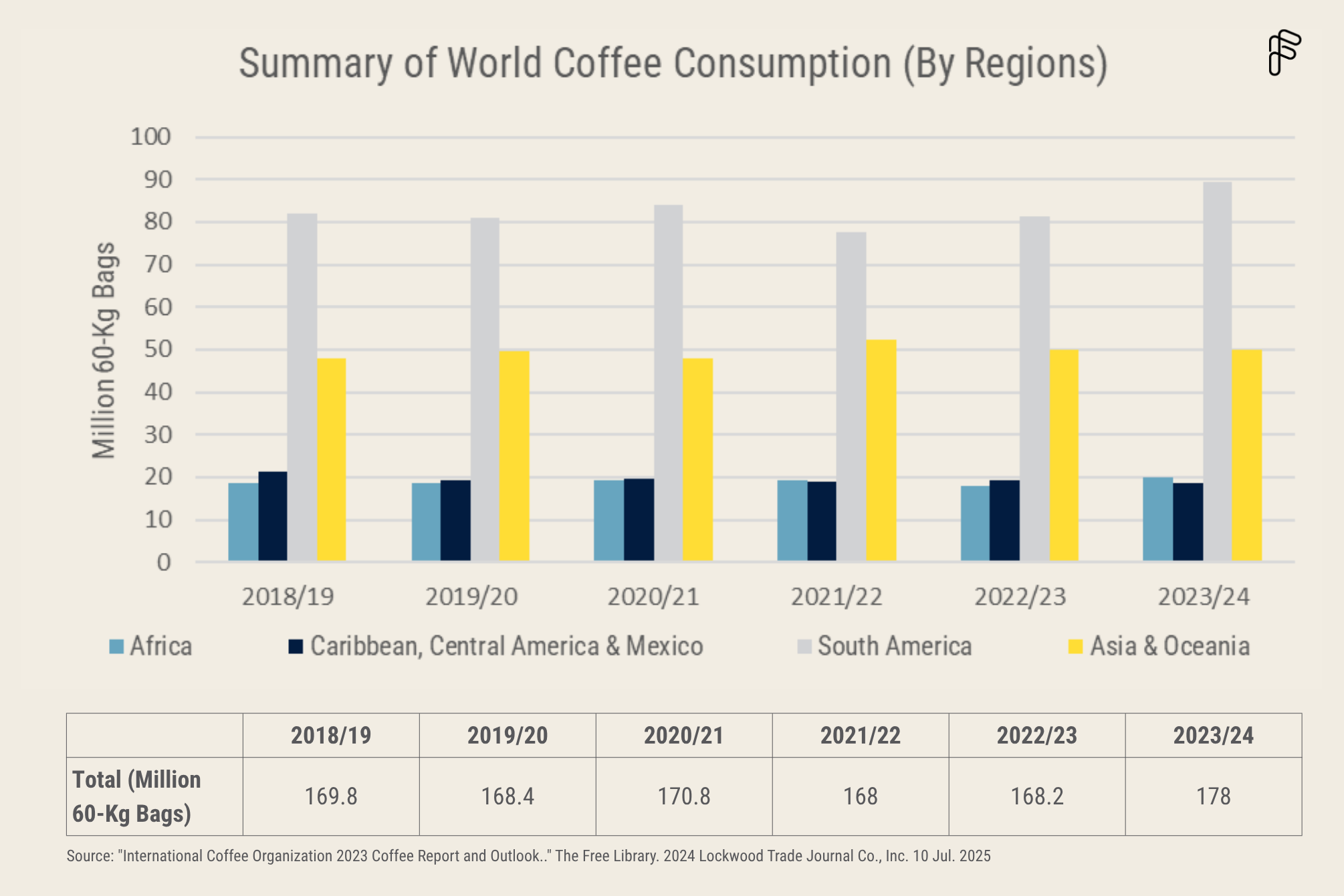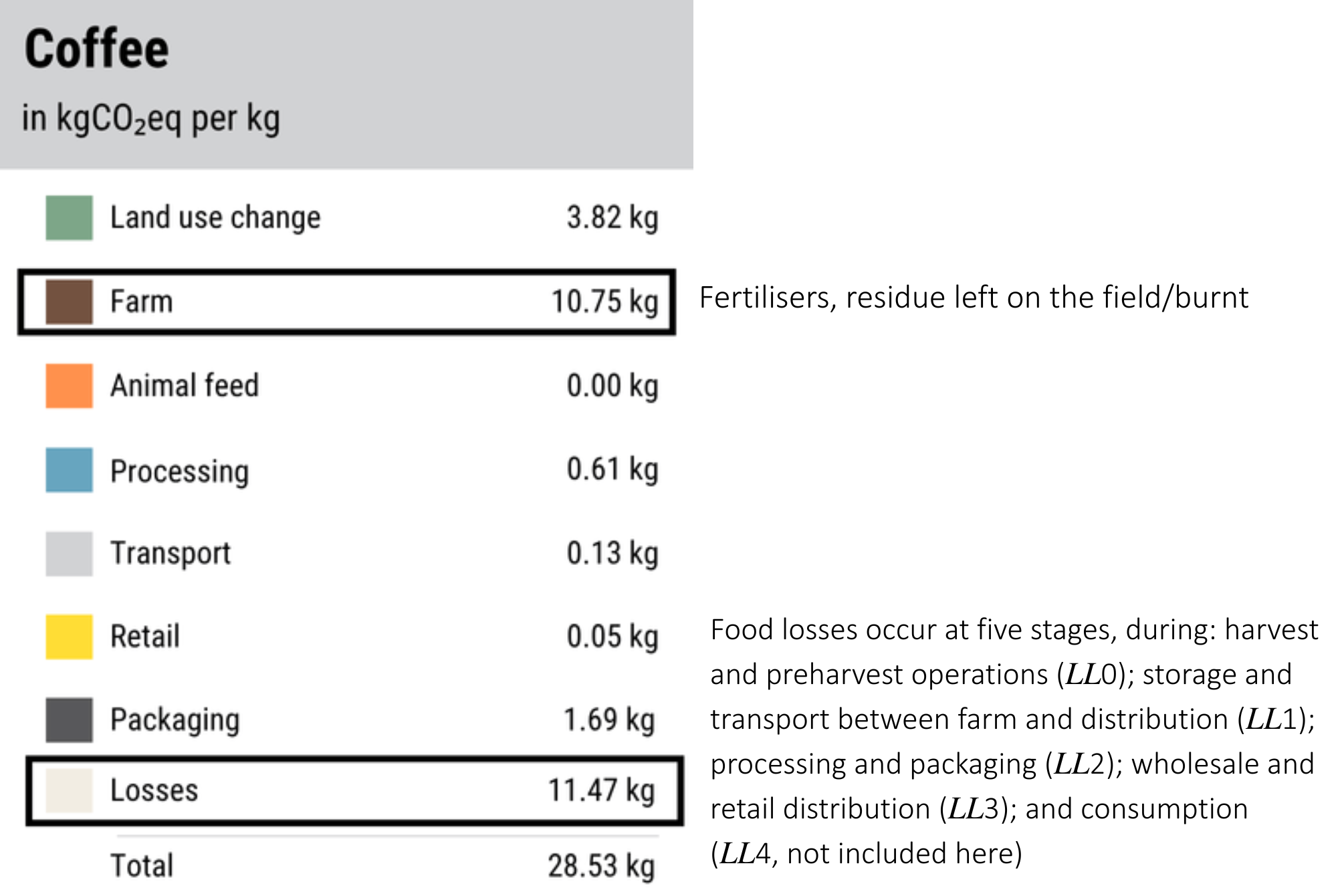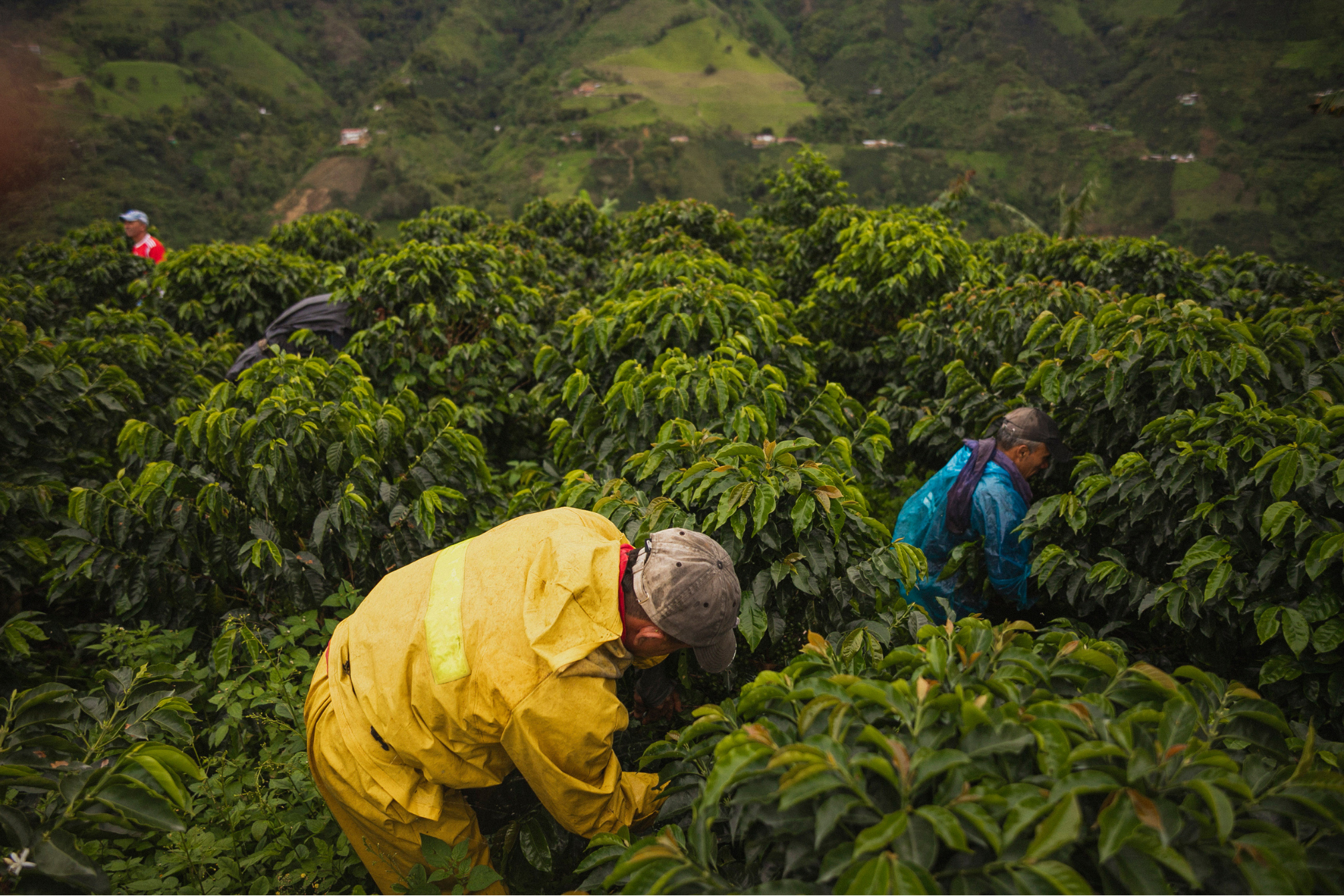- ABOUT US
- INVESTMENT FUND
- PARTNERSHIP SERVICES
- IMPACT INITIATIVES
-
SPACES
- HONG KONG
- Co-working space
- Event Space
- Prototyping Lab
- LONDON
- Co-working space
- Event Space
-
FABRICA X
- HONG KONG
- LONDON
- Subscribe
Coffee’s popularity is booming, but this growth is creating a tough cycle that puts both supply and the environment at risk.
Image: picture via Canva.com

Picture this: every day, the world enjoys over 2.25 billion cups of coffee.1 It’s a staggering number, and the love for coffee is only growing, especially in markets like China, where consumption has surged by 21% annually since 2010.2 However, this increasing appetite comes with challenges where the pressure on coffee supply chains and the environment is intensifying, made even tougher by climate change.
By 2050, global coffee consumption is projected to triple, yet keeping up with that demand isn’t easy.4 Coffee production can be unpredictable, with fluctuating yields and a declining global stock-to-use ratio declining, resulting in growing supply risks. On the bright side, the world has been growingly able to enjoy coffee in convenient forms like coffee capsules and instant blends recently. That made our daily brew easier and more efficient, using less coffee per cup. However, their ease of use can tempt us to drink more, which could offset the potential environmental benefits.5
Figure 1: World coffee consumption (2018-2023). 3

Coffee farming leaves a big environmental footprint—and climate change is making these challenges even harder to manage worldwide.
Did you know that producing a single kilogram of coffee generates greenhouse gas emissions comparable to resource-intensive beef or farmed shrimp?6 It also requires more land than many common protein sources, such as pork and poultry.7 What’s more, expansion of coffee cultivation has driven deforestation in key producing countries. For instance, in Honduras, coffee farming accounted for 50% of deforestation in 2017, releasing large amounts of greenhouse gases and putting biodiversity at risk.8
Figure 2: Coffee’s greenhouse gas emissions breakdown.9

Rising temperatures have accelerated the spread of Coffee Leaf Rust (CLR) and the Coffee Berry Borer (CBB), two major threats to coffee crops. In Guatemala, smallholder farmers have seen their yields losses of up to 71% because of CLR.10 Meanwhile, the CBB has expanded into higher altitudes previously safe for Arabica cultivation, increasing vulnerability.11 By 2050, up to 90% of coffee-growing land in countries like Ethiopia, Mexico, and Kenya could become unsuitable. Farmers might turn to new areas, but these are often forested areas, risking further deforestation and threatening ecosystems, and push planetary boundaries to the limit.12 13
Price volatility and the slow growth of coffee trees are taking a toll on farmers’ mental health, while labour abuses continue to be a serious concern.
Ever wonder what it takes to get your coffee from farm to cup? For coffee farmers, it’s a long and tough journey. Coffee trees take up to four years to mature, which means they face years of economic uncertainty and price swings. Research from Vietnam shows that these stresses are linked to higher rates of depression, poor sleep, and increased alcohol use among farmers—highlighting the real social toll of an unstable coffee market.14 Unfortunately, these challenges don’t stop there. In Brazil, 159 workers as young as 15 were rescued from slavery-like conditions on coffee farms in 2022.15 Shockingly, these abuses happened even on farms certified under ethical programs, exposing serious gaps in labour protections across the coffee industry.
Image: picture via Canva.com

Innovative solutions are urgently needed to reduce coffee’s environmental impact while stabilising supply.
Research shows that making changes throughout the coffee value chain—from how coffee is grown to how it’s transported and consumed—could cut emissions by as much as 77%.16 Improving supply chain efficiency and cutting down on losses are key steps to achieving this. Additionally, alternative coffee products with smaller environmental footprints offer promising ways to reduce our dependence on traditional coffee farming.
The future of coffee depends on smart, science-based solutions that tackle environmental, social, and economic challenges all at once. By embracing innovation and sustainability, the coffee sector can break the cycle of rising demand driving climate impacts, ensuring the industry thrives while protecting both the planet and the communities that rely on it.
1 Gunter, Marc J., et al. "Coffee drinking and mortality in 10 European countries: a multinational cohort study." Annals of internal medicine 167.4 (2017): 236-247.
2 Global Coffee Report. "The Future of the Chinese Coffee Market." Global Coffee Report, July/August 2024, www.gcrmag.com/the-future-of-the-chinese-coffee-market/. Accessed 26 June 2025.
3 International Coffee Organization. Coffee Report and Outlook, December 2023. 2023, www.icocoffee.org/documents/cy2023-24/Coffee_Report_and_Outlook_December_2023_ICO.pdf.
4 Maslin, Mark, and Carmen Nab. "Coffee: Here's the Carbon Cost of Your Daily Cup – and How to Make It Climate-Friendly." The Conversation, 4 Jan. 2021, theconversation.com/coffee-heres-the-carbon-cost-of-your-daily-cup-and-how-to-make-it-climate-friendly-152629. Accessed 26 June 2025.
5 López, María, and Carlos Rodríguez. "Here's How Your Cup of Coffee Contributes to Climate Change." The Conversation, 5 Jan. 2023, theconversation.com/heres-how-your-cup-of-coffee-contributes-to-climate-change-196648. Accessed 26 June 2025.
6 Our World in Data. "Food: Greenhouse Gas Emissions across the Supply Chain." 2023, ourworldindata.org/grapher/food-emissions-supply-chain. Accessed 26 June 2025.
7 Our World in Data. "Land Use per Kilogram of Food Product." 2020, ourworldindata.org/grapher/land-use-per-kg-poore. Accessed 26 June 2025.
8 Valade, Aude. How the Coffee Industry Is Dealing with Climate Change. CIRAD, 2023. Climate Chance, www.climate-chance.org/wp-content/uploads/2023/03/bs2022_en_utcatf_tendance_cafe.pdf. Accessed 26 June 2025.
9 Our World in Data. "Food: Greenhouse Gas Emissions across the Supply Chain." 2023, ourworldindata.org/grapher/food-emissions-supply-chain. Accessed 26 June 2025.
10 Dupre, Samuel I., Celia A. Harvey, and Margaret B. Holland. "The impact of coffee leaf rust on migration by smallholder coffee farmers in Guatemala." World Development 156 (2022): 105918.
11 Jaramillo, Juliana, et al. "Some like it hot: the influence and implications of climate change on coffee berry borer (Hypothenemus hampei) and coffee production in East Africa." PloS one 6.9 (2011): e24528.
12 Pham, Yen, et al. "The impact of climate change and variability on coffee production: a systematic review." Climatic Change 156 (2019): 609-630.
13 Conservation International. Coffee in the 21st Century: Will Climate Change and Increased Demand Lead to New Deforestation? 2023, www.thegef.org/sites/default/files/publications/CI-Report-Coffee-in-the-21st-Century.pdf. Accessed 26 June 2025.
14 Singhal, Saurabh, and Finn Tarp. "Commodity price volatility and the psychological well‐being of farmers." American Journal of Agricultural Economics 107.1 (2025): 269-289.
15 Repórter Brasil. Behind Starbucks Coffee: Brazil’s Seasonal Harvest Labourers Report Routine of Low Wages, Cold Food and Even Slave Labour on Farms That Supply the World’s Most Famous Coffee Shop Chain. October 2023, www.reporterbrasil.org.br/wp-content/uploads/2023/11/monitor_starbucks_coffee_slave_labor_ENG.pdf. Accessed 26 June 2025.
16 Nab, Carmen, and Mark Maslin. "Life cycle assessment synthesis of the carbon footprint of Arabica coffee: Case study of Brazil and Vietnam conventional and sustainable coffee production and export to the United Kingdom." Geo: Geography and Environment 7.2 (2020): e00096.